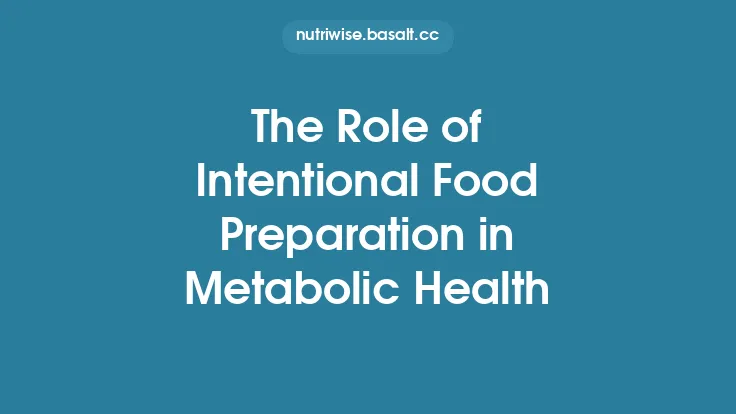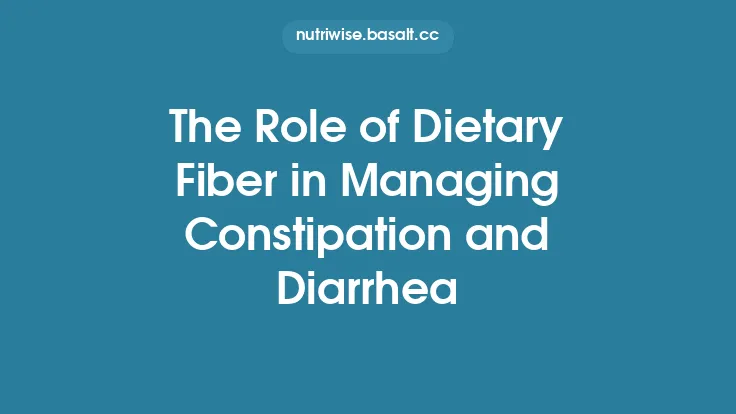Micronutrients do not exist in isolation within the foods we eat; they are embedded in a complex three‑dimensional network of carbohydrates, proteins, lipids, and other bio‑molecules that together constitute the food matrix. This matrix determines how tightly a vitamin or mineral is held, how readily it is liberated during digestion, and ultimately how efficiently it reaches the absorptive surfaces of the intestine. While the intrinsic chemical form of a micronutrient (e.g., heme iron vs. non‑heme iron, retinol vs. β‑carotene) is a primary driver of its bioavailability, the surrounding matrix and the overall composition of the meal can modulate that intrinsic potential in profound ways.
In this article we explore the structural and compositional factors that shape micronutrient absorption, drawing on mechanistic studies, human feeding trials, and emerging analytical techniques. The focus is on evergreen principles that apply across dietary patterns and food systems, rather than on transient trends or specific culinary practices.
Understanding the Food Matrix
The food matrix can be thought of as the physical scaffold that holds nutrients together. It is defined by three interrelated dimensions:
- Physical architecture – the size, shape, and integrity of cellular walls, protein networks, and lipid droplets.
- Chemical environment – pH micro‑domains, water activity, and the presence of binding ligands (e.g., polyphenols, phosphoproteins).
- Dynamic behavior – how the matrix responds to mechanical forces (chewing, mixing) and enzymatic actions during digestion.
These dimensions are not static; they evolve from farm to fork. For example, the cell walls of a raw carrot are largely intact, whereas the same carrot after blanching exhibits partially ruptured walls, altering the exposure of β‑carotene to digestive enzymes. The matrix therefore acts as a gatekeeper, controlling the rate and extent of micronutrient release.
Physical Structure and Micronutrient Release
Particle Size and Surface Area
Grinding, chopping, or pureeing a food increases its surface area, accelerating the diffusion of water and digestive enzymes into the matrix. Studies on leafy greens have shown that finely minced spinach releases up to three times more iron during simulated gastric digestion than whole leaves, even when the total iron content is identical. The principle is straightforward: smaller particles reduce diffusion distances, allowing the matrix to “open up” more quickly.
Cell Wall Integrity
Plant cell walls are composed of cellulose, hemicellulose, pectin, and lignin. Their rigidity can trap lipophilic vitamins (A, D, E, K) and certain minerals within intracellular compartments. Mechanical disruption (e.g., mastication) or enzymatic degradation (e.g., pectinases from the gut microbiota) can break these barriers. The degree of disruption is a key determinant of how much of a fat‑soluble vitamin becomes solubilized in mixed micelles, the prerequisite for absorption.
Emulsification and Lipid Droplet Size
Fat‑soluble vitamins are inherently hydrophobic and require incorporation into micelles for intestinal uptake. The size of dietary lipid droplets influences micelle formation: smaller droplets provide a larger interfacial area for the incorporation of vitamins and for the action of pancreatic lipase. In dairy emulsions, for instance, the natural globule size (~3–5 µm) facilitates efficient vitamin D incorporation, whereas larger oil droplets in some plant‑based milks may limit micellar loading unless the emulsion is further homogenized.
Chemical Interactions Within the Matrix
Protein–Mineral Complexes
Certain proteins possess high affinity for metal ions, forming complexes that can either protect the mineral from premature precipitation or sequester it from absorption. Casein in milk, for example, binds calcium in a soluble colloidal form that remains bioavailable throughout the gastrointestinal tract. Conversely, strong binding to insoluble protein aggregates can reduce the free mineral pool, limiting uptake.
Polyphenol–Micronutrient Binding
Polyphenolic compounds can form reversible complexes with both minerals and vitamins. While some of these interactions are explored in the context of “natural inhibitors,” the broader perspective is that they modulate the kinetics of release rather than acting as absolute barriers. The strength of the complex is influenced by pH, ionic strength, and the presence of competing ligands, all of which are dictated by the surrounding matrix.
Water Activity and Solubility
The micro‑environmental water activity (a_w) within a food matrix governs the solubility of hydrophilic micronutrients such as B‑vitamins and certain minerals. Low a_w, as found in dried fruits or powdered supplements, can limit dissolution until rehydration occurs in the stomach. The rate of rehydration, in turn, depends on the matrix’s porosity and the presence of hygroscopic components (e.g., sugars, salts).
Impact of Macronutrient Composition on Micronutrient Bioavailability
Lipid Content and Fat‑Soluble Vitamins
The presence of dietary fat is essential for the absorption of vitamins A, D, E, and K. However, the type of fat matters. Long‑chain triglycerides (LCTs) are more effective at stimulating bile secretion and forming mixed micelles than medium‑chain triglycerides (MCTs). Consequently, a meal rich in LCTs (e.g., olive oil, avocado) can enhance the micellar incorporation of carotenoids more efficiently than a meal dominated by MCTs (e.g., coconut oil).
Protein Quantity and Amino Acid Profile
Proteins provide both structural scaffolding and potential binding sites for micronutrients. High‑quality proteins (those with a balanced essential amino acid profile) can improve the solubility of certain minerals by maintaining an optimal pH during gastric digestion. Moreover, specific amino acids such as cysteine can act as ligands for trace elements like zinc, influencing their speciation and subsequent transport across the enterocyte membrane.
Carbohydrate Matrix and Viscosity
Complex carbohydrates, particularly soluble fibers, increase the viscosity of the intestinal contents. Elevated viscosity can slow the diffusion of micelles and reduce the rate at which micronutrients encounter the absorptive surface. While this effect is often discussed in the context of “inhibitors,” it is fundamentally a physical consequence of the carbohydrate matrix’s rheological properties.
Role of Dietary Fiber and Non‑Starch Polysaccharides
Fiber is a heterogeneous group that includes cellulose, hemicellulose, pectin, β‑glucan, and resistant starch. Each component interacts differently with micronutrients:
- Cellulose and hemicellulose provide a rigid framework that can entrap minerals, limiting their release unless the fiber is sufficiently fermented in the colon.
- Pectin forms gel‑like structures at low pH, which can sequester water‑soluble vitamins and delay their transit to the absorption site.
- β‑Glucan increases the thickness of the unstirred water layer adjacent to the intestinal epithelium, potentially reducing the flux of lipophilic vitamins.
Understanding these nuanced interactions is crucial for food scientists designing high‑fiber products that retain micronutrient potency.
Meal Composition and Micronutrient Partitioning
When multiple foods are consumed together, the composite matrix determines how each micronutrient is partitioned between soluble and insoluble phases. For instance, a mixed dish containing leafy greens (high in carotenoids), nuts (rich in lipids), and legumes (protein‑dense) creates a synergistic environment:
- Lipids from nuts facilitate micelle formation, enhancing carotenoid solubilization.
- Proteins from legumes may bind certain minerals, keeping them in a soluble state during gastric digestion.
- Cell wall fragments from greens provide a source of soluble fiber that can modulate the viscosity of the chyme, influencing the overall diffusion rates.
The net effect is a matrix‑driven modulation of absorption that cannot be predicted by examining each food in isolation.
Implications for Food Formulation and Fortification
Food manufacturers must consider matrix effects when developing fortified products. Simply adding a micronutrient to a food does not guarantee its bioavailability; the surrounding matrix can either protect the nutrient during processing and storage or impede its release during digestion. Key formulation strategies include:
- Encapsulation within lipid carriers to mimic natural micelle precursors for fat‑soluble vitamins.
- Particle size reduction of mineral powders to improve dissolution kinetics.
- Balancing protein and lipid levels to create an optimal micro‑environment for both water‑ and fat‑soluble nutrients.
These approaches rely on an understanding of how the matrix behaves under physiological conditions, rather than on external processing techniques alone.
Research Methodologies for Studying Matrix Effects
Investigating the role of the food matrix requires a combination of in vitro, ex vivo, and in vivo methods:
- Simulated gastrointestinal digestion models (e.g., INFOGEST) allow controlled manipulation of matrix variables such as particle size and lipid composition.
- Caco‑2 cell monolayers provide a platform to assess transepithelial transport of micronutrients released from different matrices.
- Stable isotope tracing in human feeding studies offers quantitative data on the fraction of a nutrient that is truly absorbed from a given matrix.
- Advanced imaging (confocal microscopy, X‑ray microtomography) visualizes the spatial distribution of micronutrients within intact food structures before and after digestion.
By integrating these techniques, researchers can delineate the precise mechanisms by which matrix characteristics influence absorption.
Future Directions
The field is moving toward personalized matrix design, where individual variations in digestive physiology (e.g., gastric pH, bile acid composition) are matched with tailored food structures to maximize nutrient uptake. Emerging technologies such as 3‑D food printing enable the creation of bespoke matrices with controlled porosity, lipid distribution, and protein networks. Additionally, computational modeling of digestion—combining fluid dynamics with kinetic enzyme reactions—promises to predict matrix behavior before a product is even manufactured.
In summary, the food matrix and overall meal composition are central determinants of micronutrient absorption. By shaping the physical release, chemical speciation, and transport dynamics of vitamins and minerals, the matrix bridges the gap between a nutrient’s intrinsic chemical potential and its actual physiological benefit. A nuanced appreciation of these interactions informs everything from dietary recommendations to the design of next‑generation fortified foods, ensuring that the micronutrients we consume are not only present on the label but also truly available to our bodies.





